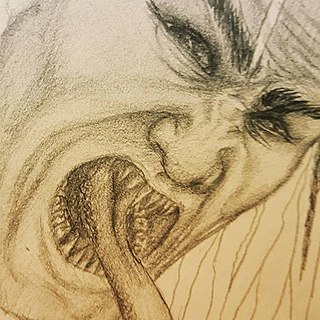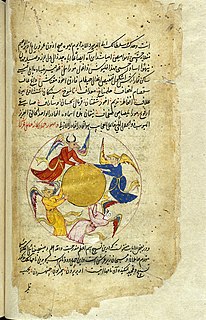| Amalanhig | |
|---|---|
| Member of Undead aswang | |
| Other names | Aswang |
| Gender | Male/female |
| Region | Hiligaynon |
Amalanhig (also called 'Maranhig' or 'Amaranhig') are creatures in Visayan mythology, particularly among Hiligaynon speaking groups. [1] [2] [3] Amalanhig are Aswangs who failed to transfer their monstrosity causing them to rise from their graves to kill humans by biting their necks. Another version that has survived through word-of-mouth recounts that Amanlanhigs are said to chase any living person they found and once they reach them, they would tickle the victim until they die, both of laughter and terror. In order to escape from Amanlanhigs, one runs in zigzag direction since they can only walk in straight direction due to the stiffness of their body. One would also climb trees or high platforms enough to be out of their reach. One would also run into lakes and rivers since Amanlanhigs are scared of deep bodies of water.[ citation needed ]

The Hiligaynon language, also often referred to by most of its speakers simply as Ilonggo, is an Austronesian regional language spoken in the Philippines by about 9.1 million people, mainly in Western Visayas and Soccsksargen, most of whom belong to the Visayan ethnic group, mainly the Hiligaynons. It is the second-most widely spoken language and a member of the so-named Visayan language family and is more distantly related to other Philippine languages.

Aswang is an umbrella term for various shape-shifting evil spirits in Filipino folklore, such as vampires, ghouls, witches, viscera suckers, and werewolfs. The Aswang is the subject of a wide variety of myths, stories, arts, and films, as it is well known throughout the Philippines. Spanish colonists noted that the Aswang was the most feared among the mythical creatures of the Philippines, even in the 16th century.Although with no specific motive other than harming others, their behavior can be interpreted as an inversion of the traditional Filipino's values. The Aswang is especially popular in Visayas, southern parts of Luzon, and parts of Mindanao.
The Amalanhig are depicted as externally identical to humans, though there is an enlargement of the upper canines in most individuals. The Amalanhig is a variant of the vampire native to the Philippines.

A vampire is a being from folklore that subsists by feeding on the vital force of the living. In European folklore, vampires were undead beings that often visited loved ones and caused mischief or deaths in the neighborhoods they inhabited while they were alive. They wore shrouds and were often described as bloated and of ruddy or dark countenance, markedly different from today's gaunt, pale vampire which dates from the early 19th century.

The Philippines, officially the Republic of the Philippines, is an archipelagic country in Southeast Asia. Situated in the western Pacific Ocean, it consists of about 7,641 islands that are categorized broadly under three main geographical divisions from north to south: Luzon, Visayas and Mindanao. The capital city of the Philippines is Manila and the most populous city is Quezon City, both part of Metro Manila. Bounded by the South China Sea on the west, the Philippine Sea on the east and the Celebes Sea on the southwest, the Philippines shares maritime borders with Taiwan to the north, Japan to the northeast, Vietnam to the west, Palau to the east, and Malaysia and Indonesia to the south.










